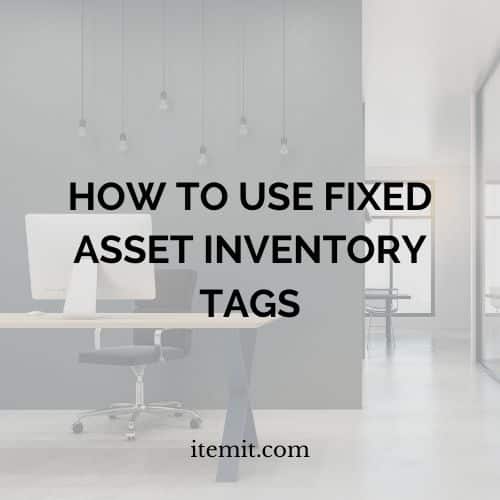
If you want more control over your assets, you’ll be able to use fixed asset inventory tags. With fixed asset tagging, you’ll gain more visibility and more accountability over your tools and equipment.
Using fixed asset inventory tags will help you:
- Track asset locations
- Streamline maintenance
- Reduce asset downtime
- Track asset usage data
- See who has interacted with assets
- Run reports
- Create a fixed asset register
When you link your fixed asset inventory tags with a fixed asset management software, the possibilities are endless. You’ll save a lot of time and a lot of money.

What Are Fixed Asset Inventory Tags?
So, what are fixed asset inventory tags? They’re a physical tag that you can stick onto your equipment. They work by giving you the ability to link your physical tools and equipment to an online profile via scanning capabilities.
Fixed asset inventory tags come in a lot of different shapes and sizes. They can be QR codes, RFID labels, GPS trackers, BLE tags or barcodes.
You’ll be able to mix and match these tags, as well as tag materials. So, if you have some heavy-duty equipment that goes through a lot of wear and tear, you’ll be able to invest in metal QR code asset tags, for example.
How Does Fixed Asset Tagging Work?
On your fixed asset management software, you’ll log all of your assets. In essence, you’ll create an online profile for each of your assets, much like a social media profile.
You can then add data to these individual asset profiles. Therefore, if an asset requires maintenance, you’ll be able to see which asset, where it is, and any other necessary information.
As all of these online profiles will make up your fixed asset register, you’ll be able to track specifics as well as trends in reports. So, if each individual asset has depreciation information attached to it, you’ll be able to see the overall trends related to all of your assets.
Fixed asset tagging, then, is the process of linking the physical assets to their online asset profiles. You’ll stick on a physical fixed asset tag and scan it in your asset tracking software.
Then, every time you scan this tag, the corresponding asset’s profile will appear, ready for edits.

How to Use Fixed Asset Management Software
When your assets have been logged and linked to their digital profiles, you’ll be able to make use of the functionality fixed asset management software provides you with.
From the ability to book and checkout equipment to the ability to track equipment maintenance, all it takes is the scan of an asset’s tag before you can instantly edit that asset’s information.
Therefore, your operations are sped up and logged effectively, thanks to fixed asset tagging.
Each scan of a fixed asset tag also updates the asset’s last seen location and the user who scanned the tag. This means that you can create an audit trail and gain visibility over where your assets have been and who has been using them.
To find out more about how itemit can help you with fixed asset tagging, saving time, and saving money, you’ll be able to book a demo using the button below.
You can also contact us at team@itemit.com or by phone at +441223 421611. Or, you can fill in the form below to start your 14-day free trial of our fixed asset tracking software.
Why not check out these blogs?
What is a Computer Asset Management System?
Tool Tracking Tips: How To Improve Construction Equipment Tracking
The Importance of Fixed Asset Management Software
Find Out More About Fixed Asset Tagging… With A FREE Trial!

Try itemit
Choose a better way to track
your assets.
Start your free 14-day trial now!

Keep Learning
itemit Blog
Tips, guides, industry best practices, and news.
Inventory Planning Best Practices: Avoid Stockouts and Overages with Asset Tracking
Discover inventory planning best practices to avoid stockouts and overages. Learn how asset tracking improves accuracy, reduces waste, and optimizes supply chain management.
How to Optimise Product Inventory Management
Learn how to optimize product inventory management with effective strategies, a product inventory management system, and best practices for efficiency.
How to Keep Your Asset Record Accurate and Up-to-Date
An accurate asset record is crucial for businesses aiming to optimise their operations, minimise costs, and enhance compliance. With itemit’s intuitive fixed asset management software, you can streamline your asset tracking process, ensuring that your records are always current and reliable.


